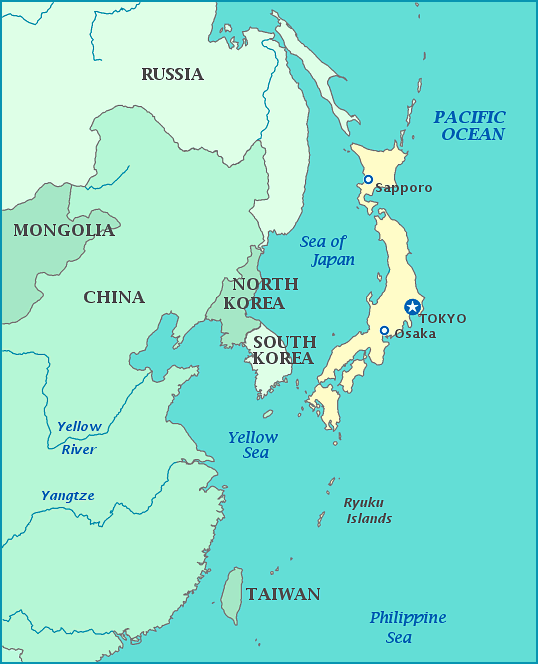
Quill's Quiz - 1100 Question US Mega Geography Quiz
Print this map of Japan US States and Capitals Map Quiz
Free Maps, Map Puzzles and Educational Software: Owl and Mouse Educational Software
Print this map of Japan US States and Capitals Map Quiz
Free Maps, Map Puzzles and Educational Software: Owl and Mouse Educational Software
JAPAN
The country of Japan is a strato-volcanic archipelago, consisting of 6,852 islands, and claiming others. It takes its nickname from the formal translation of its native name, Nippon Koku, meaning 'Land of the Rising Sun'.
The islands have been inhabited since the Paleolithic by Caucasoid peoples who were the ancestors of the Ainu and Yamato. Buddhism, along with other Asian cultural beginnings and people who brought them, came from both China and Korea, though much later. There was much resistance towards the new religion, until it became popular in the Asuka period. This was followed by the Nara period, which was known for flourishing art and culture and a stable empire. The country was struck by a major small pox epidemic in 735-737 CE, but arts and culture flourished once again afterward in the Heian period, which introduced the Samurai warrior class, which was predominantly trained in archery. At this time, power began to focus on individual shoguns and their shogunates instead of a centralized and powerful emperor. Thus began the Onin War of 1467, and then the Warring States or Sengoku period. In 1542, Dutch explorer Fernao Mendes Pinto was the first European to visit the islands, though they had been hinted at by the Chinese before. Trade began immediately, though the Japanese were slow and highly cautious about their new partners; even more so about other Europeans as they would only trade or exchange science with the Dutch until the 19th century when forced to open trade globally by Commodore Perry.
Before the opening of trade, merchants were seen as one of the lowest classes. Signing the Meiji Constitution, and adapting Western political, judicial, and military institutions was at first met with resistance, confusion, and culture clash. Today the Japanese are dominant in the world's economy, have a very low crime rate, and have the second highest life expectancy in the world. After winning the First Sino-Japanese War and the Russo-Japanese Wars, Japan gained control of Taiwan and southern half of Sakhalin. Military expansionism continued with WWI, as Japan grabbed what it could of Asia, including Manchuria in 1931, resulting in international condemnation of this action. Japan was not spurned, but did resign from the League of Nations two years after entering. Continuing further into Asia, Japan invaded more of China in 1937, sparking the Second Sino-Japanese War and invading French Indochina in 1941. Japan also signed a neutrality pact with Russia, giving them what they thought was an easy defeat of America, beginning with bombing of Pearl Harbor on December 7th, 1941. With the US joining the war after the attack, Japan found it had no other choice but unconditional surrender and renounced the right to declare war in 1945, losing the Greater East Asia Prosperity Sphere, millions of lives, and destroying the national infrastructure.
The country suffered a major earthquake in 2011; the strongest recorded in Japanese history, triggering the Fukushima Dai'ichi nuclear disaster. Of all the land, 73% is forested, mountains, and unusable for agriculture, industry, or residential use; a contributing factor in why Japan is one of the most densely populated countries in the world. With 108 volcanoes, vulnerability to earthquakes and tsunami, it has the highest natural disaster risk of all developed countries. Japan is home to 90,000 species of wildlife, including the Brown Bear, Japanese Macaque, Tanuki, and Japanese Giant Salamander. The population is almost entirely homogeneous, with 98.5% ethnic Japanese living on the islands.
Area: 377,915 square kilometers
Population: 127,103,388 (as of 2014)


